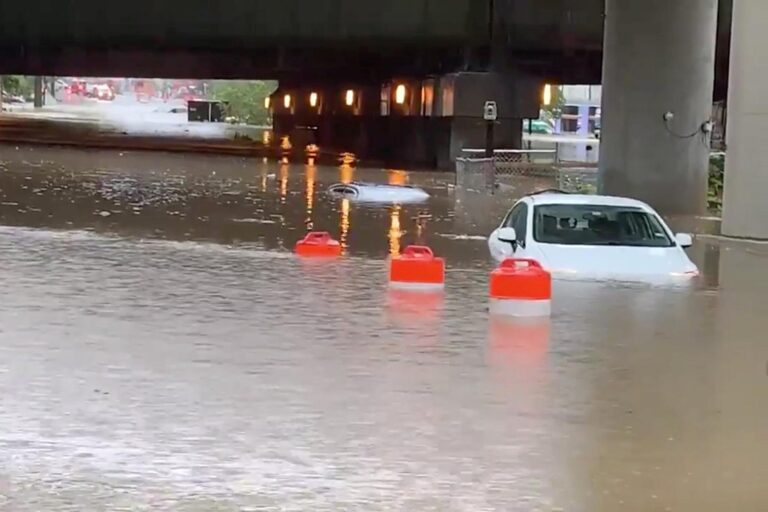As extreme weather events increase in frequency and intensity across the globe, Canada faces mounting challenges in adapting to the “new reality” of flash flooding and severe storms. Despite advancements in forecasting and emergency response, experts warn that many regions remain ill-prepared for the rapidly changing climate conditions that are fueling more destructive and unpredictable weather patterns. This growing vulnerability raises urgent questions about infrastructure resilience, disaster readiness, and long-term planning, as communities grapple with the devastating impacts of recent flash floods and violent storms. CTV News explores why Canada’s current systems may fall short in meeting these escalating threats and what steps are needed to better protect Canadians in the years ahead.
Canada’s infrastructure struggling to cope with escalating flash floods and storms
As extreme weather events increase in frequency and intensity, many Canadian cities are discovering that existing infrastructure is ill-equipped to manage the sudden surge of water brought on by flash floods and severe storms. Drainage systems, aging stormwater networks, and emergency response mechanisms are straining under conditions they were never designed to handle. Experts warn that without urgent upgrades and innovative planning, the social and economic toll of these disasters will continue to rise, disproportionately affecting vulnerable communities situated in flood-prone areas.
Municipalities are beginning to prioritize resilience but face significant hurdles, including budget constraints and complex regulatory environments. Current infrastructure often fails to address key challenges such as:
- Capacity limitations: Stormwater systems can be overwhelmed within minutes during intense rainfall.
- Urban expansion: Increased impervious surfaces exacerbate runoff, reducing natural absorption.
- Maintenance backlogs: Deferred repairs weaken the integrity of flood prevention measures.
| Infrastructure Component | Current Status | Projected Improvement Needed by 2030 |
|---|---|---|
| Stormwater Drains | Mostly outdated | 50% capacity increase |
| Flood Barriers | Limited deployment | Widespread installation |
| Emergency Response | Reactive | Proactive & real-time monitoring |
Experts warn of gaps in emergency response and preparedness strategies
Despite Canada’s growing exposure to intense weather events, many experts highlight significant deficiencies in the nation’s emergency response frameworks. Current infrastructure and communication systems often struggle to keep pace with the unpredictability and scale of flash floods and severe storms, leaving communities vulnerable. There is also concern that emergency preparedness plans have not been updated to reflect the increasing frequency and severity of such natural disasters, resulting in delayed responses and inadequate resource allocation when crisis strikes.
Key challenges identified include:
- Fragmented coordination between federal, provincial, and municipal agencies
- Limited public awareness and training on disaster readiness
- Insufficient investment in resilient infrastructure and early warning technologies
- Gaps in data sharing and real-time analytics for rapid decision-making
| Issue | Impact | Suggested Action |
|---|---|---|
| Communication Breakdown | Delayed warnings to residents | Integrated alert systems |
| Insufficient Funding | Weak infrastructure | Increased federal grants |
| Training Gaps | Poor community readiness | Regular simulation exercises |
Calls for investment in resilient systems and updated flood forecasting technologies
Experts and community leaders alike stress that bolstering Canada’s infrastructure is no longer optional but essential to withstand the increasing frequency of flash floods and severe weather events. The current systems, many of which were designed for less volatile climatic conditions, are stretched thin, prompting urgent calls for enhanced resilience through strategic investments. These investments include upgrading stormwater management systems, reinforcing critical urban infrastructure, and integrating green solutions like permeable surfaces and expanded wetland areas to absorb floodwaters naturally.
Parallel to physical upgrades, there is a growing emphasis on adopting cutting-edge flood forecasting technologies that leverage real-time data, AI, and improved modelling to provide timely warnings. Such advancements could significantly reduce emergency response times and save lives. The table below highlights key areas requiring focused investment to prepare Canada for this evolving environmental challenge:
| Investment Area | Purpose | Estimated Impact |
|---|---|---|
| Advanced Radar Systems | Enhance early detection of flash floods | Up to 40% faster alerts |
| Urban Waterways Upgrade | Improve floodwater flow & capacity | Reduce urban flooding by 30% |
| Community Engagement | Increase public preparedness and response | Boost evacuation effectiveness by 25% |
Insights and Conclusions
As Canada faces an increasing threat from flash flooding and severe storms, experts warn that current infrastructure and preparedness measures may fall short in addressing the new reality shaped by climate change. Without urgent investment and adaptation strategies, communities across the country risk facing escalating damages and disruptions. The time to act is now, as authorities, policymakers, and citizens grapple with the challenges of a rapidly evolving environment that demands resilience and proactive planning.




